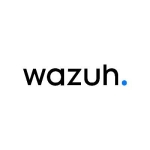At the level of user visibility, it enriches a lot of data that the user might not otherwise know about and allows you to enrich other platforms with that data.
The contextual information added by Securonix has helped reduce investigation time by minutes because we no longer consult multiple sources and everything is centralized in one place.
It has helped improve our threat detection response and reduced noise from false positives, although it depends a lot on which network is being configured. The native ones trigger a lot, so we have introduced additional context in them.
But we have saved time in threat detection and noise reduction. It allows us to automate more use cases. I'm not sure if it has improved our level of threat investigation.
The solution has also helped detect advanced threats faster through the threat modeling. Several use cases are incorporated and it warns you about any behavior and more advanced threats. You don't need to review each threat but it informs you of the behaviors that you must take into account and it is easier to deduce them.
The dashboards that Securonix uses have helped us to do more in less time because if you need to see an anomaly or a specific event, the dashboard provides you with a summary of the data about that event.
Another benefit is that the platform has helped minimize infrastructure management. We invest less time in giving support and troubleshooting.
The most valuable feature is what Securonix calls enrichment. Securonix is very powerful because of all the data it can process and automatically enrich. The actionable intelligence it provides is one of its benefits, due to the processing capacity it has. Something to keep in mind is that Securonix needs a lot of initial work to be able to properly enrich itself, but once installed it is very powerful.
It's very good in helping to ingest all our log sources when investigating threats. That is back to the enrichment theme. It's very powerful. When you ingest data to Securonix, what it does is feed back to other sources like your firewall, and antivirus proxy, and vice versa. And the use cases filter data.
The UEBA capabilities are also very valuable.
First, we saw how many events we had in the past SIEM. Under that same report, the infrastructure was made in Securonix, the RING was built, the platforms were connected, and then we let Securonix enrich in the system while the platform was configured. After that, the monitoring started.
There were particularities. The implementation of the infrastructure was simple, but the integration was complex due to integration issues in one of the solutions.
It took approximately three weeks until we implemented everything. In terms of staff from our side, there were two technicians, one who was in charge of integrations and another in charge of configurations in the SIEM. My responsibility was more on the strategic approach. Additionally, two integration managers from the Securonix team were involved.
Securonix notifies us when it needs to do maintenance. We only have to take care of the RING since it is local and not part of the SaaS infrastructure.
Securonix is very easy and very intuitive compared to the other platforms. At the access level, it is much more practical. However, there are other platforms with better research levels and data ingestion than Securonix.
We evaluated Splunk, which is very similar to Securonix. We went with Securonix because we wanted to understand more about UEBA and enrichment, and for financial reasons.
In terms of threat investigations and onboarding, versus previous solutions that we have used, having access to UEBA allows you to analyze threats based more on behavior. But if you were to manually model, in other SIEMs, all the use cases that Securonix has, they would be very similar. Something that Securonix has in its favor is the enrichment prior to those threat detections. It took us about three to four weeks to get all the sources into the Securonix platform.
When it comes to adding contextual information to security events, I would give it an eight or a nine out of 10. It enriches things a lot. But the concept by which Securonix works, which is to enrich by source and by modules, makes it very cumbersome to configure. If you set it all up, you can overload the SIEM. They tell you it's possible to set everything to the maximum capacity but this approach is not recommended.
Overall, it is a powerful platform. The cons are minimal and only require small attention and tedious initial work. Once Securonix is operative, it is very powerful.
It is a very good platform for discovering unknown information and is great at helping to visualize and review data. Thus, it indirectly supports data correlation. Thanks to Securonix, I learned that there are always things to discover. That's not only in the materialization of threats, but also in terms of discovery of permissions, users, and information about entities belonging to the company. And the enrichment gives you visibility that you didn't know about.
Foreign Language:(Spanish)
¿Cuál es nuestro caso de uso principal?
Brindamos servicios de SOC cibernético usando a SECURONIX como un correlacionador de eventos.
¿Cómo ha ayudado a mi organización?
A nivel de visibilidad del usuario, enriquece una gran cantidad de datos que el usuario podría no conocer de otra manera y le permite enriquecer otras plataformas con esos datos.
La información contextual agregada por Securonix ha ayudado a reducir el tiempo de investigación en minutos porque ya no consultamos múltiples fuentes y todo está centralizado en un solo lugar.
Ha ayudado a mejorar nuestra respuesta de detección de amenazas y ha reducido el ruido de los falsos positivos, aunque depende mucho de la red que se esté configurando. Los nativos se activan mucho, por lo que hemos introducido contexto adicional en ellos.
Pero hemos ahorrado tiempo en la detección de amenazas y reducción de ruido. Nos permite automatizar más casos de uso. No estoy seguro si ha mejorado nuestro nivel de investigación de amenazas.
La solución también ayudó a detectar amenazas avanzadas más rápido a través del modelado de amenazas. Se incorporan varios casos de uso y te advierte sobre cualquier comportamiento y amenazas más avanzadas. No necesitas revisar cada amenaza sino que te informa de los comportamientos que debes tener en cuenta y es más fácil deducirlos.
Los tableros que usa Securonix nos han ayudado a hacer más en menos tiempo porque si necesita ver una anomalía o un evento específico, el tablero le brinda un resumen de los datos sobre ese evento.
Otro beneficio es que la plataforma ha ayudado a minimizar la gestión de la infraestructura. Invertimos menos tiempo en dar soporte y solucionar problemas.
¿Qué es lo más valioso?
La característica más valiosa es lo que en Securonix llaman enriquecimiento. Securonix es muy poderoso debido a todos los datos que puede procesar y enriquecer automáticamente. La inteligencia accionable que proporciona es uno de sus beneficios debido a la capacidad de procesamiento que posee. Algo a tener en cuenta es que Securonix necesita mucho trabajo inicial para poder enriquecerse adecuadamente, pero una vez instalado es muy potente.
Es muy bueno para ayudar a ingerir todas nuestras fuentes de registro al investigar amenazas. Volviendo al tema del enriquecimiento. Es muy poderoso. Cuando ingiere datos a Securonix, lo que hace es retroalimentar a otras fuentes como su firewall y proxy antivirus, y viceversa. Y los casos de uso filtran datos.
Las capacidades de UEBA también son muy valiosas.
¿Qué necesita mejorar?
El enfoque basado en análisis para encontrar amenazas sofisticadas y reducir los falsos positivos es positivo y bueno, pero la plataforma requiere un concepto más dinámico. Todo es un poco estático.
Además, el barrido autónomo de amenazas es muy enriquecedor pero, dicho esto, el informe de detección de amenazas carece de un poco de contexto. La característica de barrer de forma autónoma es buena. La forma en que podrían mejorar el ATS sería usar más conciencia y comunicación con el usuario. No nos dan muchos detalles en el informe de detección de amenazas. Sería muy útil que nos explicaran el impacto.
¿Por cuánto tiempo he usado la solución?
Hemos estado usando Securonix Next-Gen SIEM durante cuatro meses aproximadamente. Somos proveedores de servicios, no clientes finales. Por el momento, solo tenemos la implementación en una ubicación.
¿Qué pienso sobre la estabilidad de la solución
Hasta ahora, no hemos tenido ningún problema. Es muy estable.
¿Qué opino de la escalabilidad de la solución?
Por el momento, no tenemos suficientes registros para escalar, pero en base a la infraestructura y por lo que he visto, Securonix es muy práctico y es posible aumentar su capacidad.
¿Cómo son el servicio de atención al cliente y el soporte?
El soporte es un área a mejorar porque les toma un poco de tiempo atender los tickets. Y en cuanto a configuraciones más complejas, por ejemplo, cuando quieres generar un cambio en la plataforma, tienes que enviar un ticket y no puedes modificar plantillas ni crear cosas. Eso solo lo pueden hacer los administradores ya que es un servicio SaaS.
En general, el soporte técnico me parece bueno. Solucionan los problemas que se presentan, pero sus tiempos de respuesta no son muy buenos.
¿Cómo calificaría el servicio y soporte al cliente?
Neutral
¿Cómo fue la configuración inicial?
Primero, vimos cuántos eventos tuvimos en el pasado SIEM. Bajo ese mismo informe, se hizo la infraestructura en Securonix, se construyó el RING, se conectaron las plataformas y luego dejamos que Securonix enriqueciera en el sistema mientras se configuraba la plataforma. Después de eso, comenzó el monitoreo.
Había particularidades. La implementación de la infraestructura fue simple, pero la integración fue compleja debido a problemas de integración en una de las soluciones.
Pasaron aproximadamente tres semanas hasta que implementamos todo. En cuanto al personal de nuestra parte, había dos técnicos, uno que estaba a cargo de las integraciones y otro a cargo de las configuraciones en el SIEM. Mi responsabilidad estaba más en el enfoque estratégico. Además, participaron dos gerentes de integración del equipo de Securonix.
Securonix nos avisa cuando necesita hacer mantenimiento. Solo tenemos que cuidar el RING ya que es local y no parte de la infraestructura SaaS.
¿Cuál es mi experiencia con los precios, el costo de configuración y las licencias?
El precio es bueno, pero al agregar más cosas, la licencia se vuelve más compleja porque una licencia EPS fluctúa mucho. Este concepto de licencia va a ser problemático a largo plazo.
¿Qué otras soluciones evalué?
Securonix es muy fácil y muy intuitivo en comparación con las otras plataformas. A nivel de acceso, es mucho más práctico. Sin embargo, existen otras plataformas con mejores niveles de investigación e ingesta de datos que Securonix.
Evaluamos Splunk, que es muy similar a Securonix. Elegimos Securonix porque queríamos saber más sobre UEBA y el enriquecimiento, y por razones financieras.
En términos de investigaciones e incorporación de amenazas, en comparación con las soluciones anteriores que hemos utilizado, tener acceso a UEBA te permite analizar las amenazas en función del comportamiento. Pero si tuvieras que modelar manualmente, en otros SIEMs, todos los casos de uso que tiene Securonix, serían muy similares. Algo que tiene Securonix a su favor es el enriquecimiento previo a esas detecciones de amenazas. Nos llevó entre tres y cuatro semanas incorporar todas las fuentes a la plataforma Securonix.
¿Qué otro consejo tengo?
A la hora de añadir información contextual a los eventos de seguridad le daría un ocho o un nueve sobre 10. Enriquece mucho las cosas. Pero el concepto por el que trabaja Securonix, que es enriquecer por fuente y por módulos, lo hace muy engorroso de configurar. Si lo configura todo, puede sobrecargar el SIEM. Te dicen que es posible configurar todo a la capacidad máxima, pero no se recomienda este enfoque.
En general, es una plataforma poderosa. Las desventajas son mínimas y sólo requieren poca atención y un tedioso trabajo inicial. Una vez que Securonix está operativo, es muy poderoso.
Es una muy buena plataforma para descubrir información desconocida y es excelente para ayudar a visualizar y revisar datos. Por lo tanto, admite indirectamente la correlación de datos. Gracias a Securonix, aprendí que siempre hay cosas por descubrir. Eso no es solo en la materialización de amenazas, sino también en términos de descubrimiento de permisos, usuarios e información sobre entidades pertenecientes a la empresa. Y el enriquecimiento te da una visibilidad que no conocías antes.





















